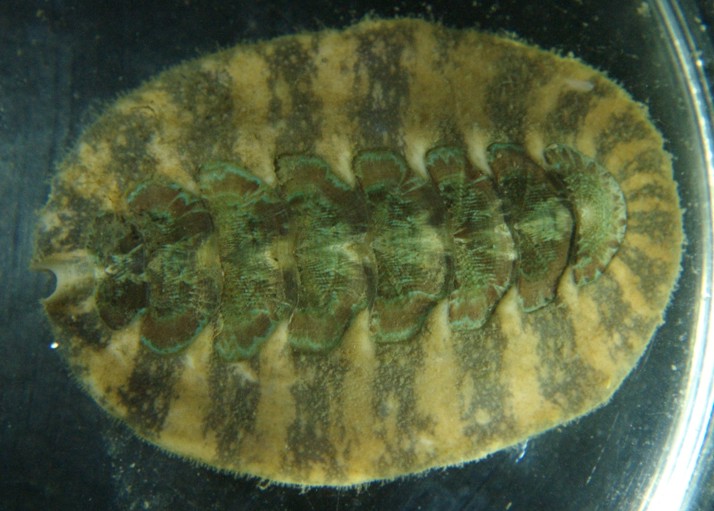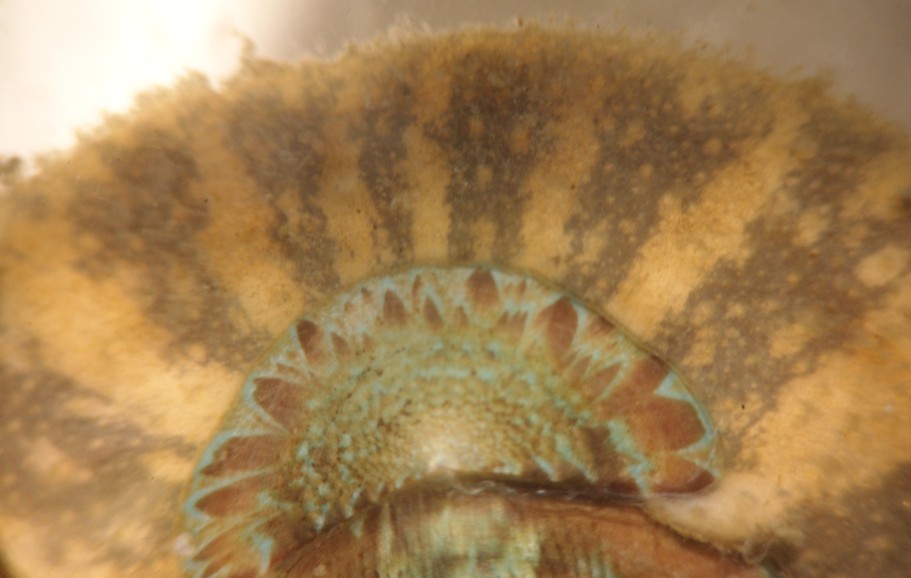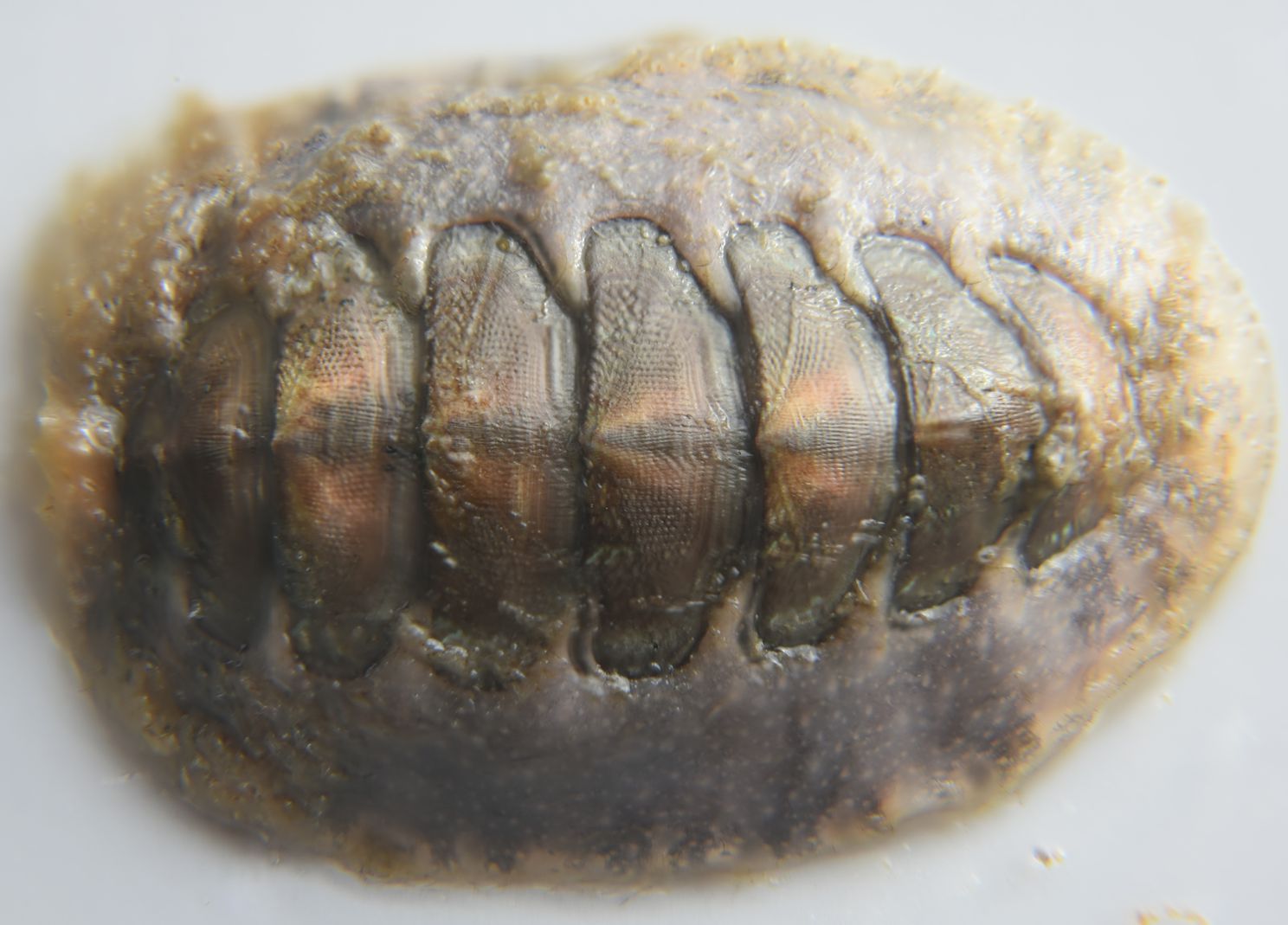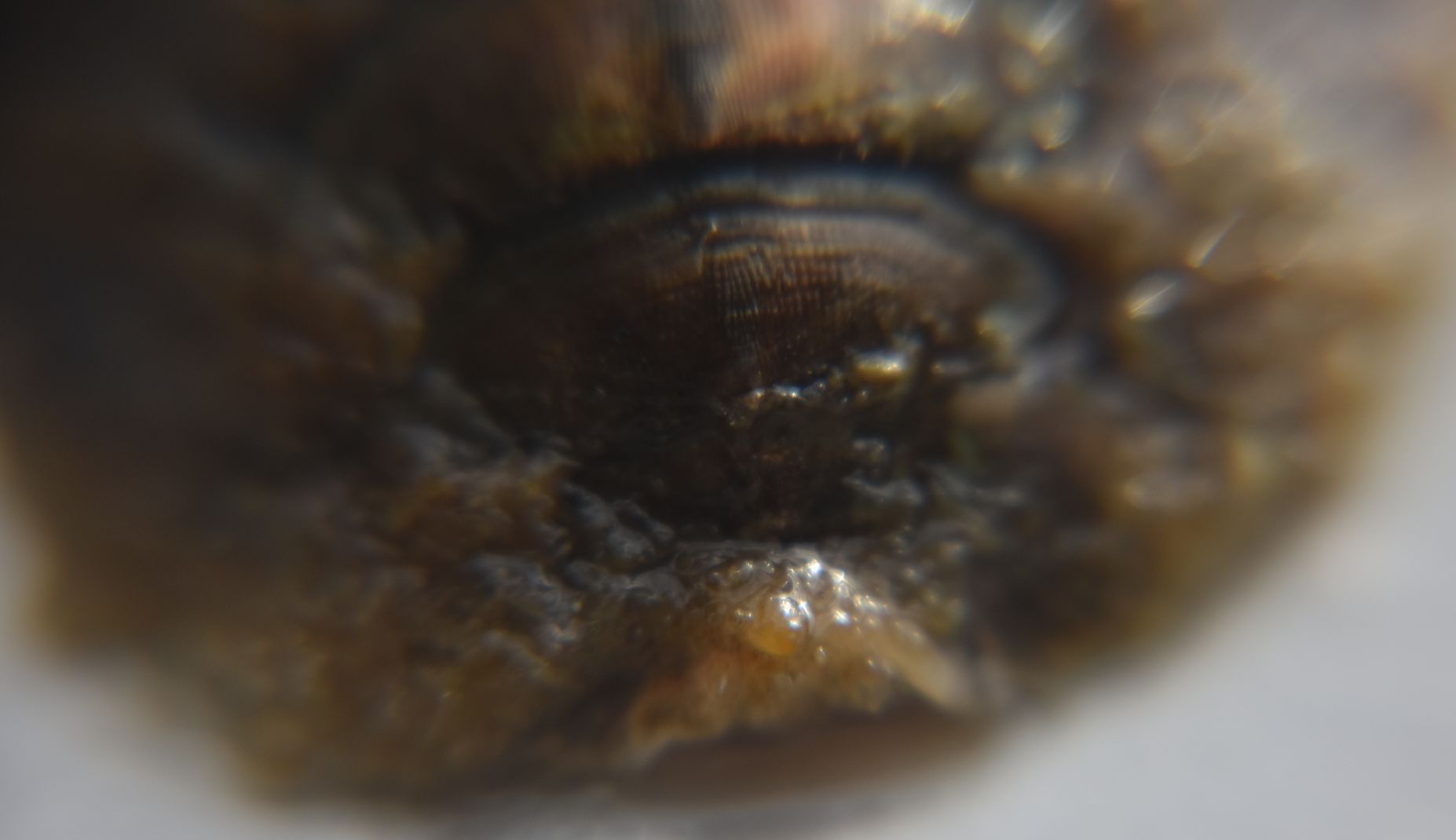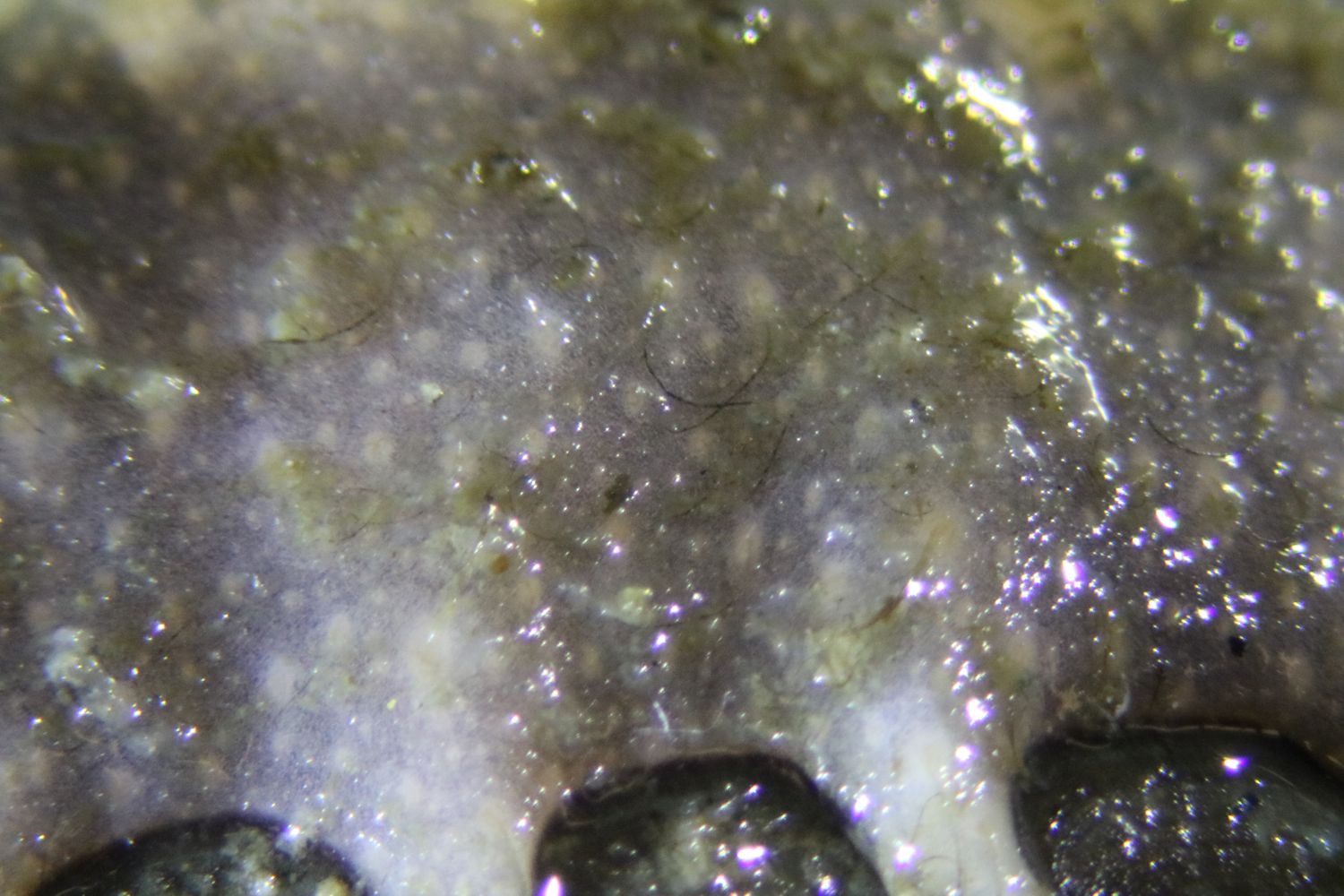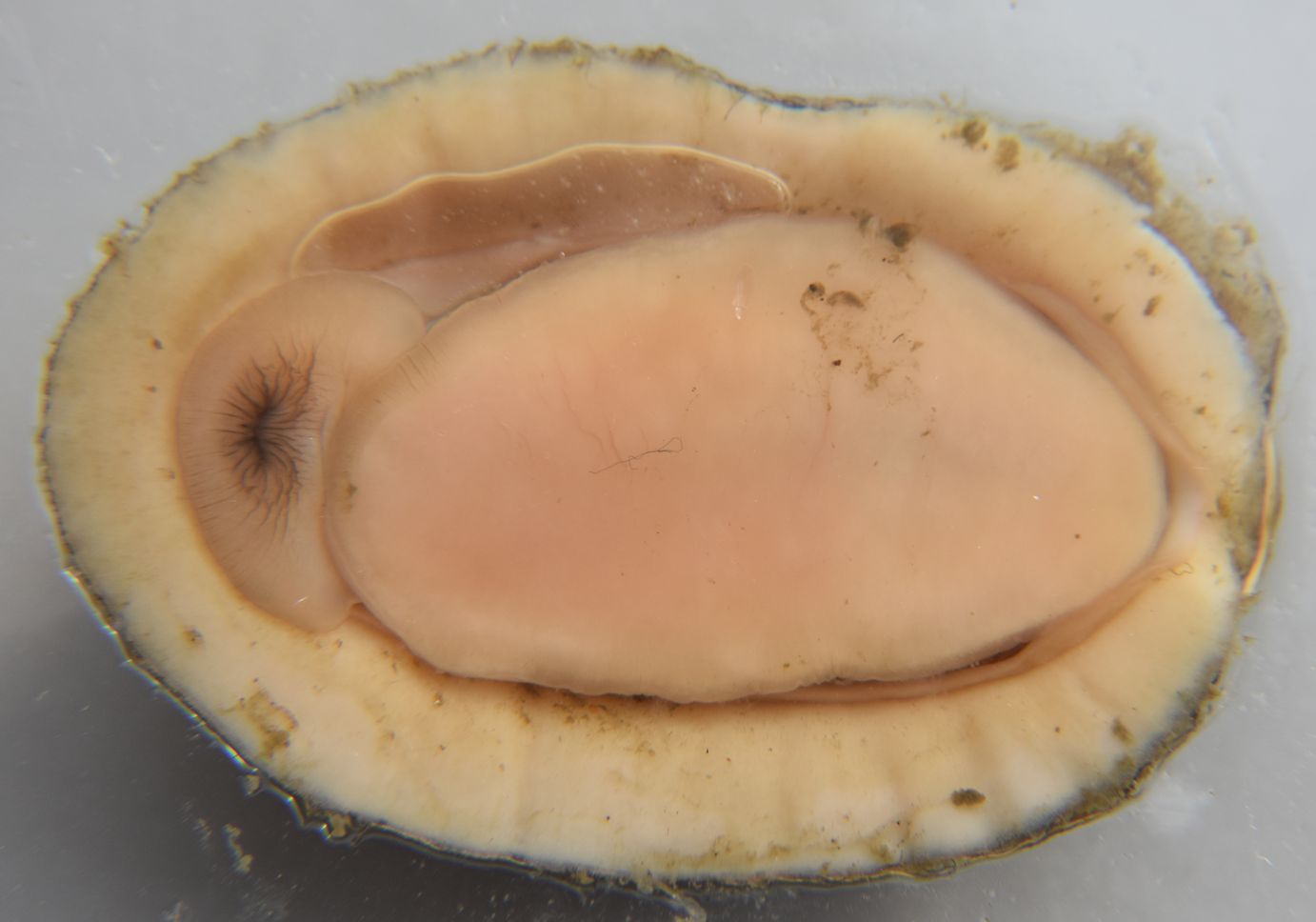Description: This chiton has a girdle with thin, scattered, flexible hairs but it is not granular nor does it have overlapping scales (photo). The girdle is of similar width all around and is not sharply wider anteriorly. The girdle hairs are shorter than the width of the girdle (up to about 0.5 mm long) and so fine and scattered that at first it may appear that the girdle has no hairs (photo). The girdle hairs have fine filaments which are often in two rows up opposite sides of the hair and are tipped by a glassy spicule. Body length is not more than twice the width. The posterior end has a distinct cleft (see above). Plates 1 and 8 are of similar length. The central areas of most of plates 2-7 have longitudinal rows of tubercles plus pits. The lateral areas of plates 2-7 generally have oblique rows of tubercles. Where the central and lateral areas meet there is a ridge of fairly large tubercles which may be partly coalesced. The girdle is flesh or tan colored, sometimes with alternating lighter and darker stripes as seen above or mottled light/dark brown. Color of plates variable (may include orange, green, yellow, and brown). Length up to 6 (10) cm.
How to Distinguish from Similar Species:Mopalia ciliata and M. spectabilis have abundant girdle hairs up to 3-4 mm long. M. imporcata has hairs of length equal to or greater than the width of the girdle.
Geographical Range: Northern Alaska to southern California, rare south of Oregon
Depth Range: Mostly intertidal, to 18 m
Habitat: Under rocks, in crevices, or under ledges
Biology/Natural History:
This chiton
is a generalist feeder which cleans almost everything off the rock
areas
on which it grazes.
| Return to: | |||
| Main Page | Alphabetic Index | Systematic Index | Glossary |
References:
Dichotomous Keys:Carlton, 2007
Kozloff, 1987, 1996
General References:
Harbo, 1997
Lamb and Hanby, 2005
O'Clair and O'Clair, 1998
Sept, 1999
Scientific Articles:
Berry,
S. Stillman, 1951. Notes on some British Columbia
chitons--II.
Journal of Molluscan Studies 28:6 pp. 213-229. [based on the
chitons
collected by Ed Ricketts during his expeditions to British Columbia]
Kelly, Ryan P. and Douglas J. Eernisse, 2006. Reconstructing a radiation: the genus Mopalia in the north Pacific. Invertebrate Systematics 22:1 pp. 17-28. http://dx.doi.org/10.1071/IS06021
Kelly, Ryan P., Indra Neil Sarkar, Douglas J. Eernisse, and Rob DeSalle, 2007. DNA barcoding using chitons (genus Mopalia). Molecular Ecology Notes 7:2 pp. 177-183. DOI: 10.1111/j.1471-8286.2006.01641.x
Vendrasco, Michael J. Christine Z. Fernandez, Douglas J. Eernisse, and Bruce Runnegar, 2008. Aesthete canal morphology in the Mopaliidae (Polyplacophora). American Malacological Bulletin 25:1 pp. 51-69. http://dx.doi.org/10.4003/0740-2783-25.1.51
Web sites:
General Notes and Observations: Locations, abundances, unusual behaviors:
The head plate (plate 1, seen here) is about the same width as plate 8, and the girdle is about the same width in front as on the sides. The girdle has neither scales nor tubercles, but it does have fine, scattered hairs which are so fine and sparse that it is hard to see them except along the edges.
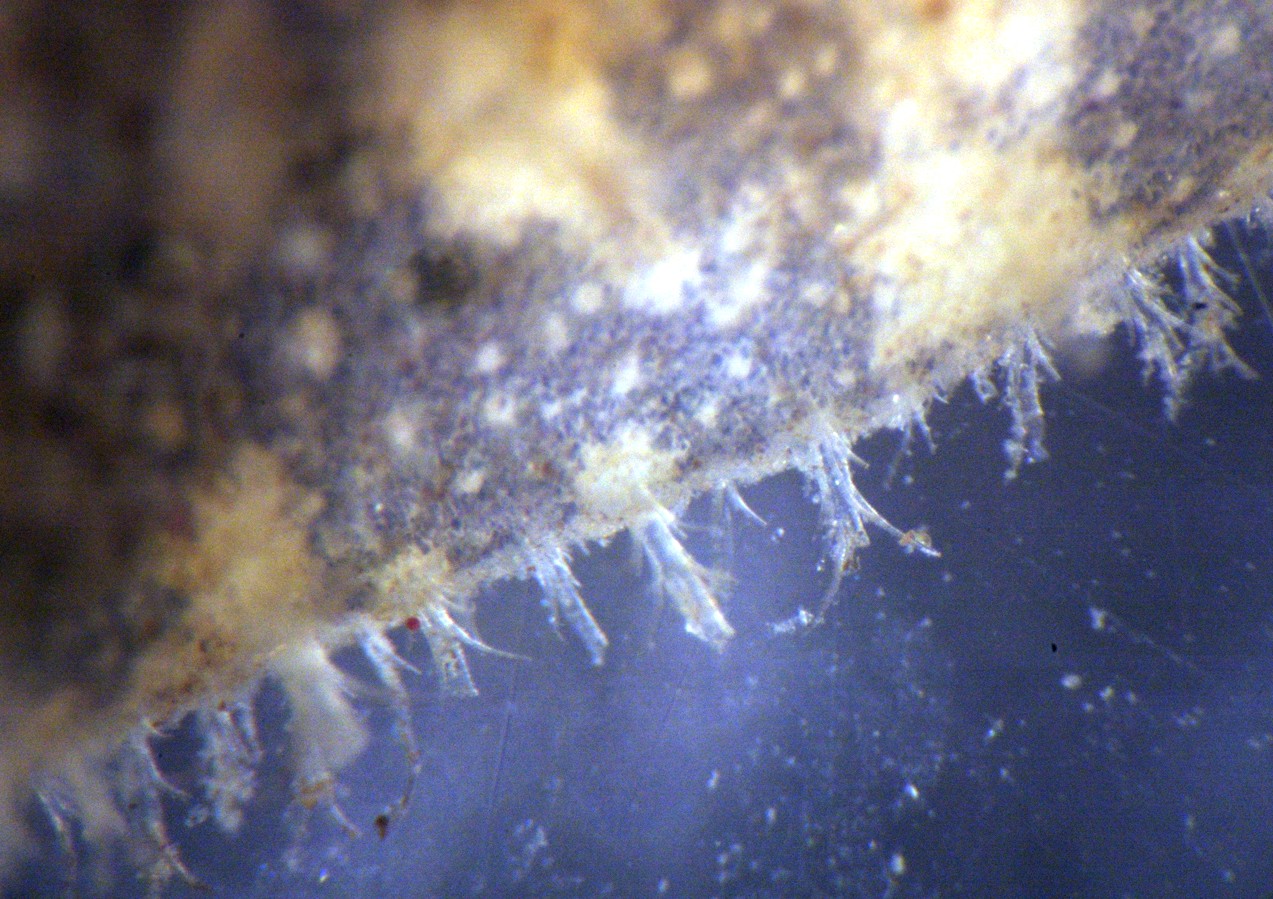
The girdle
hairs
are sparse and fine. They can hardly be seen except, for
example,
here along the edge of the mantle
at high magnification. The fine filaments which sprout from
the hairs
are often in two rows of curved, diverging bristles on opposite sides
of
the main hair and have a glassy spicule
on the end. Photo by Dave Cowles, August 2012
Authors and Editors of Page:
Dave Cowles (2012): Created original page
CSS coding for page developed by Jonathan Cowles (2007)
Salish Sea Invertebrates web site provided courtesy of Walla Walla University
